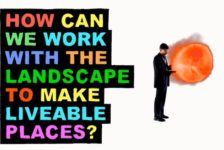Over the past few years, one way or another, you have probably heard of ‘The Fun Theory’. Or perhaps you’ve seen some YouTube clips of the famous Fun Theory, for example a Piano Staircase? Or what about the one with The World’s Deepest Bin? Or The Bottle Bank Arcade Machine? These three YouTube clips were used in The Fun Theory campaign run by Volkswagen. The principle behind the Fun Theory is that the easiest way to change people’s behavior for the better is to make whatever they need to do fun. By making climbing the stairs more fun, more people chose to ignore the neighboring escalator. Easy peasy! The Fun Theory, the brainchild of advertising agency DDB Stockholm, was a fantastic success, it went viral; people were inspired, enthused, and the Fun Theory award garnered over 700 entries. People were having fun and trying to persuade others to act responsibly, whether it was for health or environmental reasons. It didn’t even seem remotely connected to the Blue Motion Technology cars (the most eco-friendly cars in the Volkswagen range) that it was trying to promote. In what has to be one of the most clever and engaging pieces of marketing of the 21st century Volkswagen re-branded themselves as an eco-friendly, fun, and exciting company. Well-done Volkswagen. But what is really behind the fun theory? Is it as simple as fun equals act more responsibly? If we take a look at the entry that won the Fun Theory award, Kevin Richardson’s The Speed Camera Lottery, what we see is essentially bribery. Harsh words perhaps, but at the end of the day that’s what it is, although without any truly nasty intentions behind it. The Speed Camera rewarded those for not breaking the law by entering them into a lottery of money, which was accumulated from the fines of those that had broken the speed limit. The Fun Theory is essentially a form of operant conditioning, a type of learning whereby an individual’s behavior changes due to the consequences felt. Psychologist B.F. Skinner coined the term operant conditioning in 1937. The most famous example of operant conditioning is the Skinner Box. Essentially, when a rat or small animal is placed in a box and its behavior is observed during trials, where it is either rewarded (food) or punished (a quick zap). That’s not to reduce it to pure boring black and white; Volkswagen has really hit the nail on the head by calling it the Fun Theory. Things we should be doing anyway, such as obeying the law, recycling, not littering because it is the utilitarian option, is often not done simply because it requires more effort and we are selfish. Yet what if that option was fun? Personal enjoyment becomes the reward. What can we as Landscape Architects learn from the Fun Theory? Well, the theory also crosses over into the bounds of environmental psychology. We are always in a physical and mental dialogue with spaces. Why are some spaces comfortable? Why are others harsh and unwelcoming? As the Fun Theory relies on certain ‘triggers’ to motivate us, the question becomes, what elements can we place within the landscape so that people are healthier, happier, and more likely to be environmentally-friendly? All three experiments by Volkswagen (the stairs, the bottle bank, the bin) as well as having a function also called attention to themselves. They can be used as examples to teach us a lesson about the design of public space and the composition of elements within them. All three exemplars were delightful and engaging – optically, emotionally, or physically. If you design a neighborhood that has no recycling areas, how likely are the residents to recycle? Urban designer Jan Gehl asks questions like fewer roads means less traffic? Which ultimately means more walking or cycling. Better space denotes better city life, which encourages social interaction and enhances community values. What all three aspects (environmental psychology, the fun theory, operant conditioning) share, is that they all focus on human behavior. It’s about long-term behavior and attitude change. Perhaps when the piano staircase was removed, a certain percentage of people still used the stairs. As Volkswagen states, “the Fun Theory became more than a campaign, it became a way of thinking.” The Fun Theory is only one way, though, of changing peoples’ behavior. We should design with fun and reward in mind and continue to learn from our mistakes. Yet how many more “electric shocks” (floods, low grain reserves, cancer related to genetically modified crops) will it take? So in the end, although we try Fun Theories and they do partially work, some may say “electric shocks” are the only things that work on the majority. Rather than adopt this attitude however, it is critical that Landscape Architects lead by example and help create solutions to existing and future ‘electric shocks,’ while applying the principles of the Fun Theory to inform their design. Because after all, there’s nothing like a bit of fun! Article written by Sonia Jackett
This article was originally submitted to Landscape Architects Network
Published in Blog










